Dogs are naturally curious — they love to sniff, lick, and chew anything that catches their attention. Unfortunately, that curiosity can sometimes turn dangerous. From chocolate and medicines to cleaning agents and plants, several everyday items can lead to poisoning in dogs if ingested, inhaled, or absorbed through the skin.
This guide helps you recognize the early and advanced signs of dog poisoning, understand common causes, and know exactly what to do if your dog eats poison — including life-saving treatment steps and prevention tips.
What’s the Difference Between a Poison and a Toxin in Dogs?
While the terms poison and toxin are often used interchangeably, they have distinct meanings in veterinary medicine.
- Poison refers to any substance — natural or artificial — that can harm the body when swallowed, inhaled, or absorbed. Examples include rat poison, bleach, and certain human medications.
- Toxin, on the other hand, refers to poisonous substances that are produced by living organisms such as plants, animals, fungi, or bacteria. Common examples include mushroom toxins, snake venom, and bacterial toxins like botulinum.
Both can trigger severe reactions in dogs, but identifying the source helps veterinarians plan appropriate treatment.
What Types of Toxins Commonly Affect Dogs?
Different toxins affect different organs — some target the liver, others the kidneys, nervous system, or blood. Below are the most common categories of dog poisons and their effects.
Household Items Toxic to Dogs
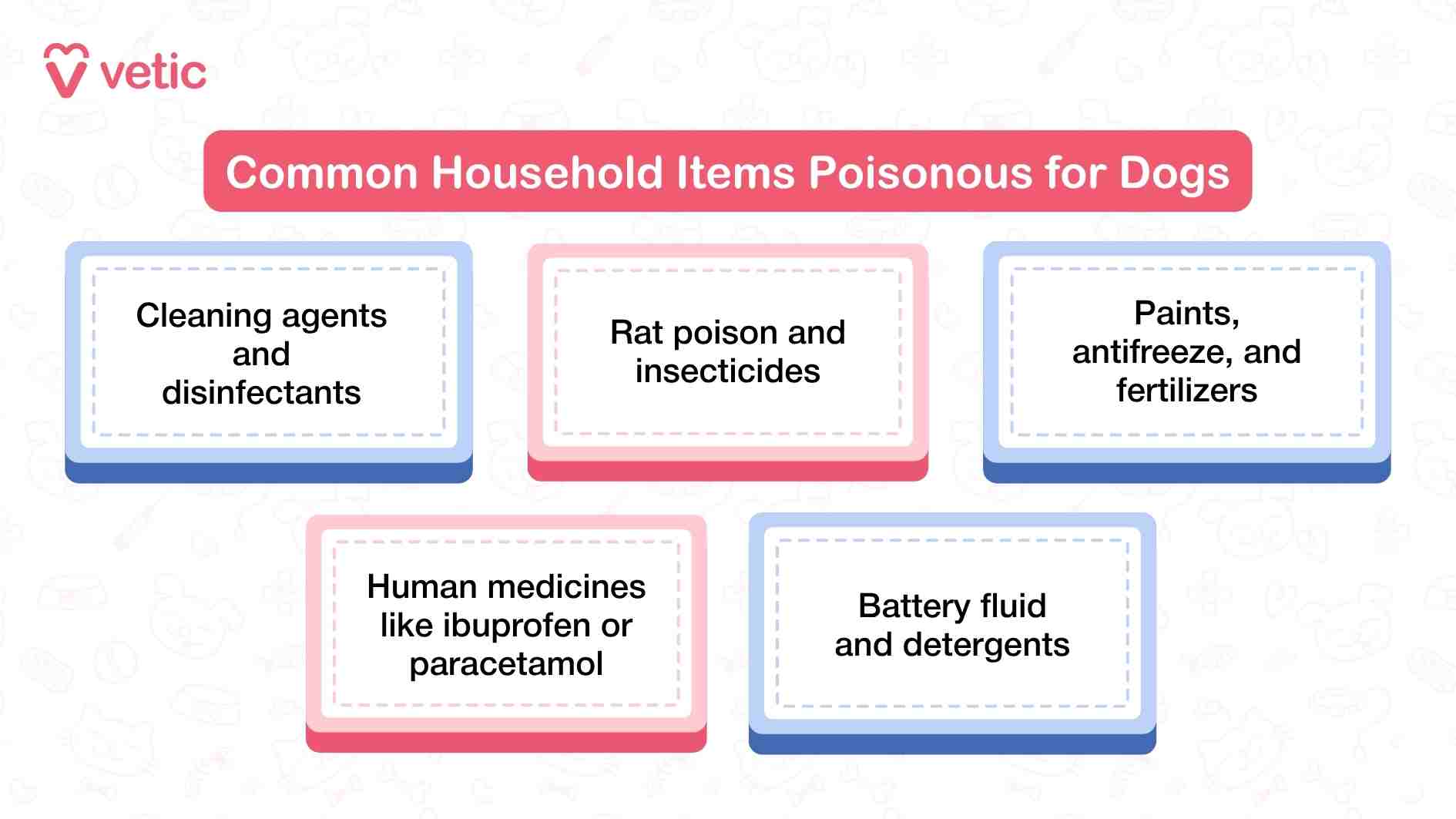
Many common home essentials can be deadly if a dog chews or licks them. Examples include:
- Cleaning agents such as bleach, floor disinfectants, and toilet cleaners
- Rodenticides (rat poison) and insecticides
- Paint thinners, antifreeze, and fertilizers
- Human medications such as ibuprofen, paracetamol, and antidepressants
Even small doses of these substances can cause vomiting, drooling, or seizures; classic signs of dog poisoning.
Foods That Commonly Cause Poisoning in Dogs
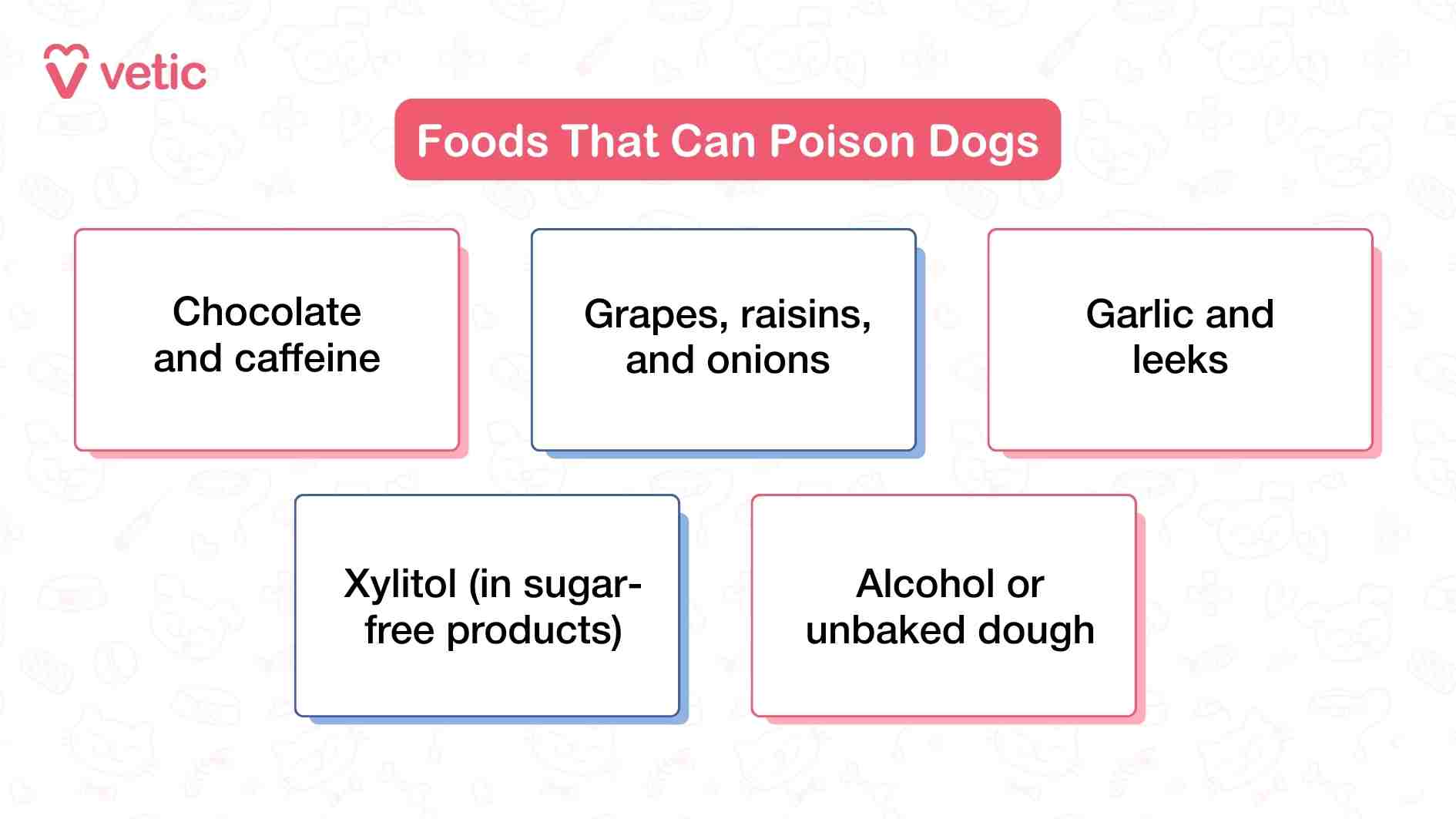
Certain human foods that seem harmless can trigger severe toxicity in dogs:
- Chocolate and caffeine – cause tremors, vomiting, seizures
- Grapes and raisins – lead to kidney failure
- Onions and garlic – damage red blood cells, causing anaemia
- Xylitol (artificial sweetener) – triggers rapid insulin release and low blood sugar
- Alcohol and raw dough – cause severe dehydration and nervous system depression
If your dog has eaten poison or toxic food, do not wait for symptoms to appear; call your vet immediately.
Natural and Environmental Toxins Dangerous to Dogs
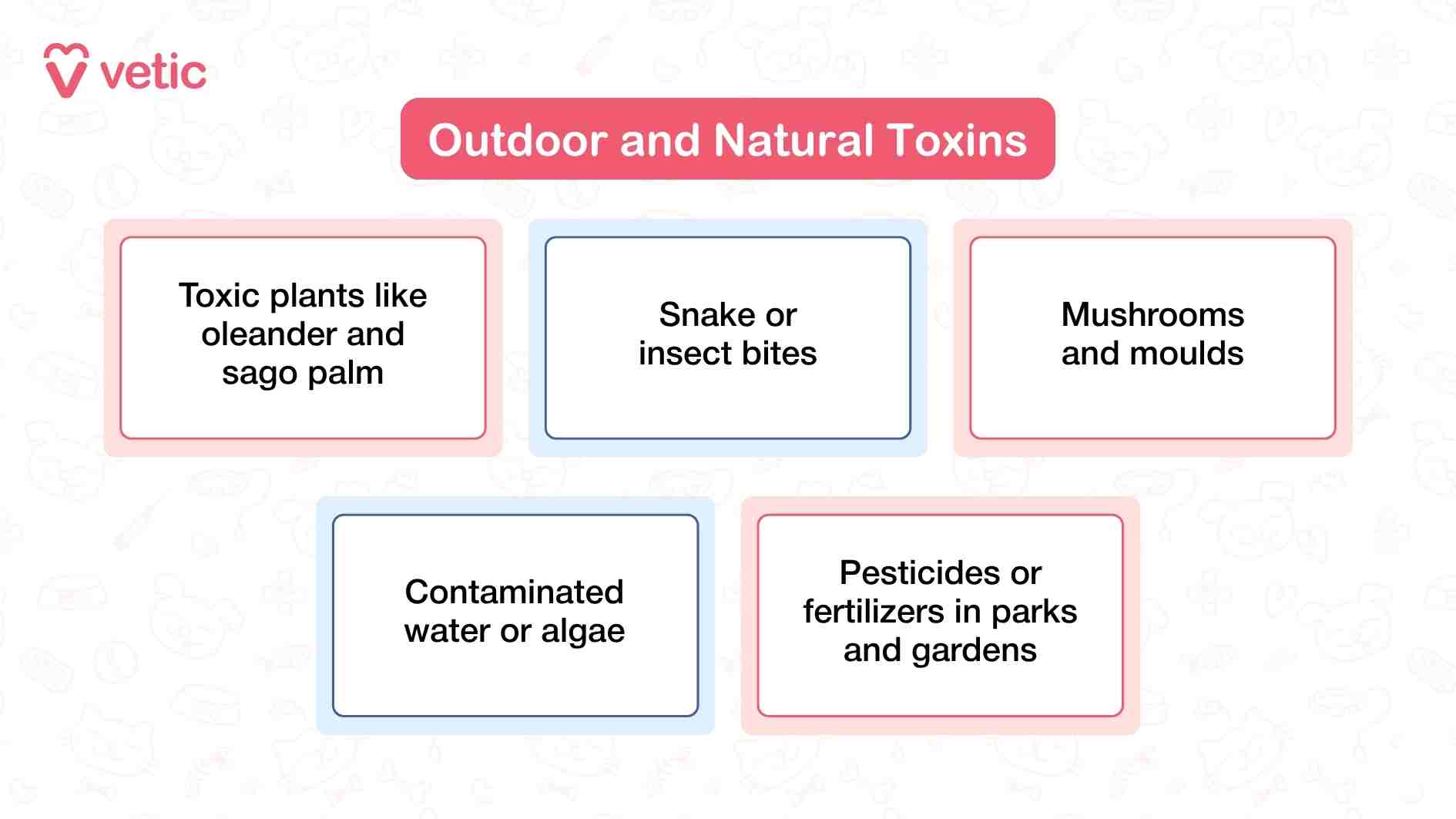
Dogs can also be poisoned outdoors.
Watch for:
- Toxic plants such as lilies, oleander, and sago palm
- Insect bites or stings (bees, wasps, scorpions)
- Snake venom can cause paralysis and internal bleeding
- Moulds and mushrooms – affect the liver and nervous system
- Contaminated water or soil may contain algae or bacterial toxins
Even licking contaminated fur or paws can cause a reaction.
What Are the Signs of Toxicity or Poisoning in Dogs?
Dog poisoning symptoms can vary depending on the type of toxin, how much was ingested, and your pet’s size or age. Recognizing the early warning signs can help you act before it’s too late.
Early Warning Signs to Watch For
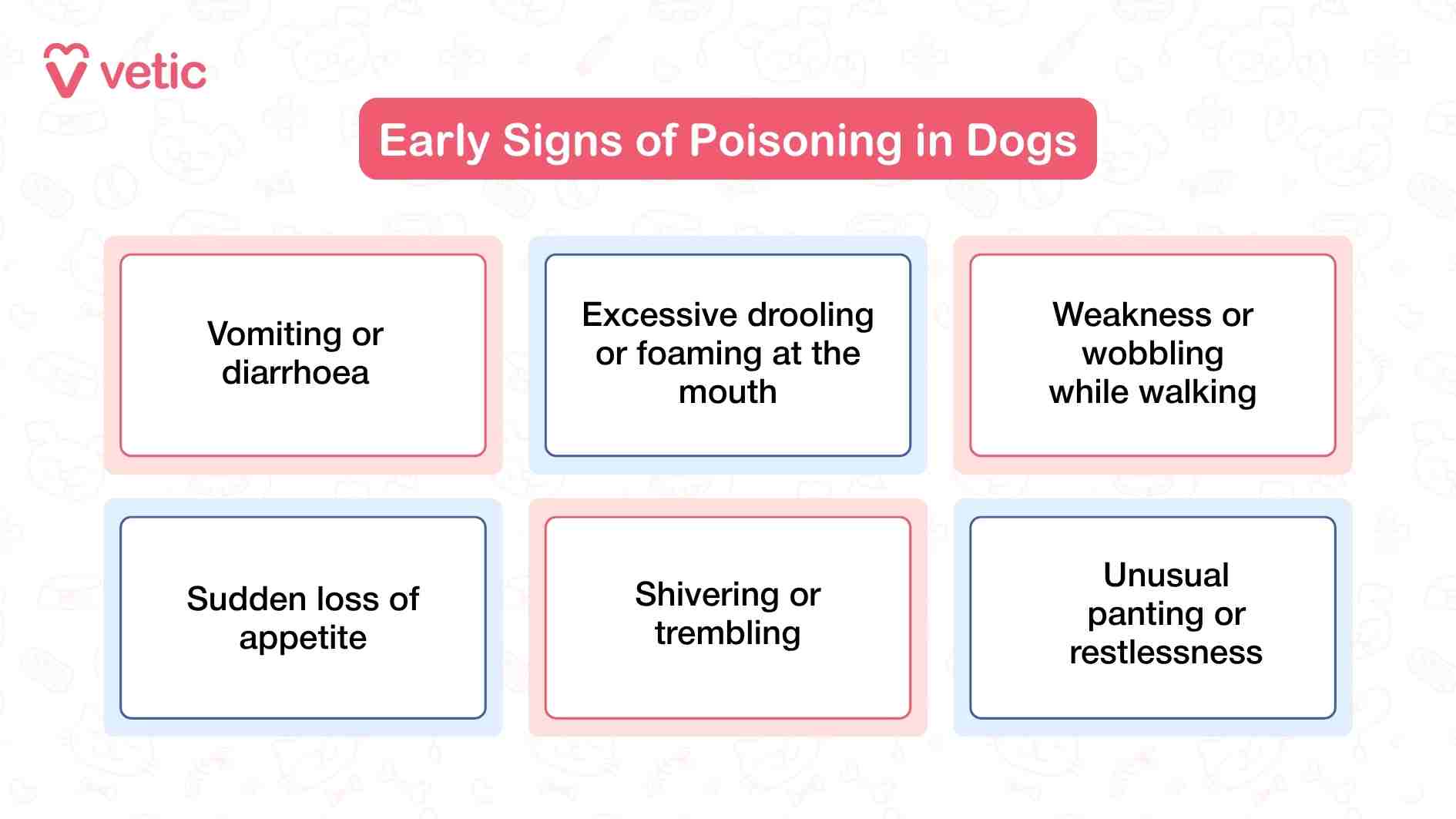
- Sudden vomiting or diarrhoea
- Excessive drooling or foaming at the mouth
- Weakness or wobbling while walking
- Loss of appetite or refusal to eat
- Unusual panting or restlessness
- Pale gums or excessive thirst
- Shivering or trembling
If your dog is foaming at the mouth or showing any of these early signs, it may be the body’s attempt to eliminate the toxin.
Severe or Life-Threatening Symptoms in Dogs
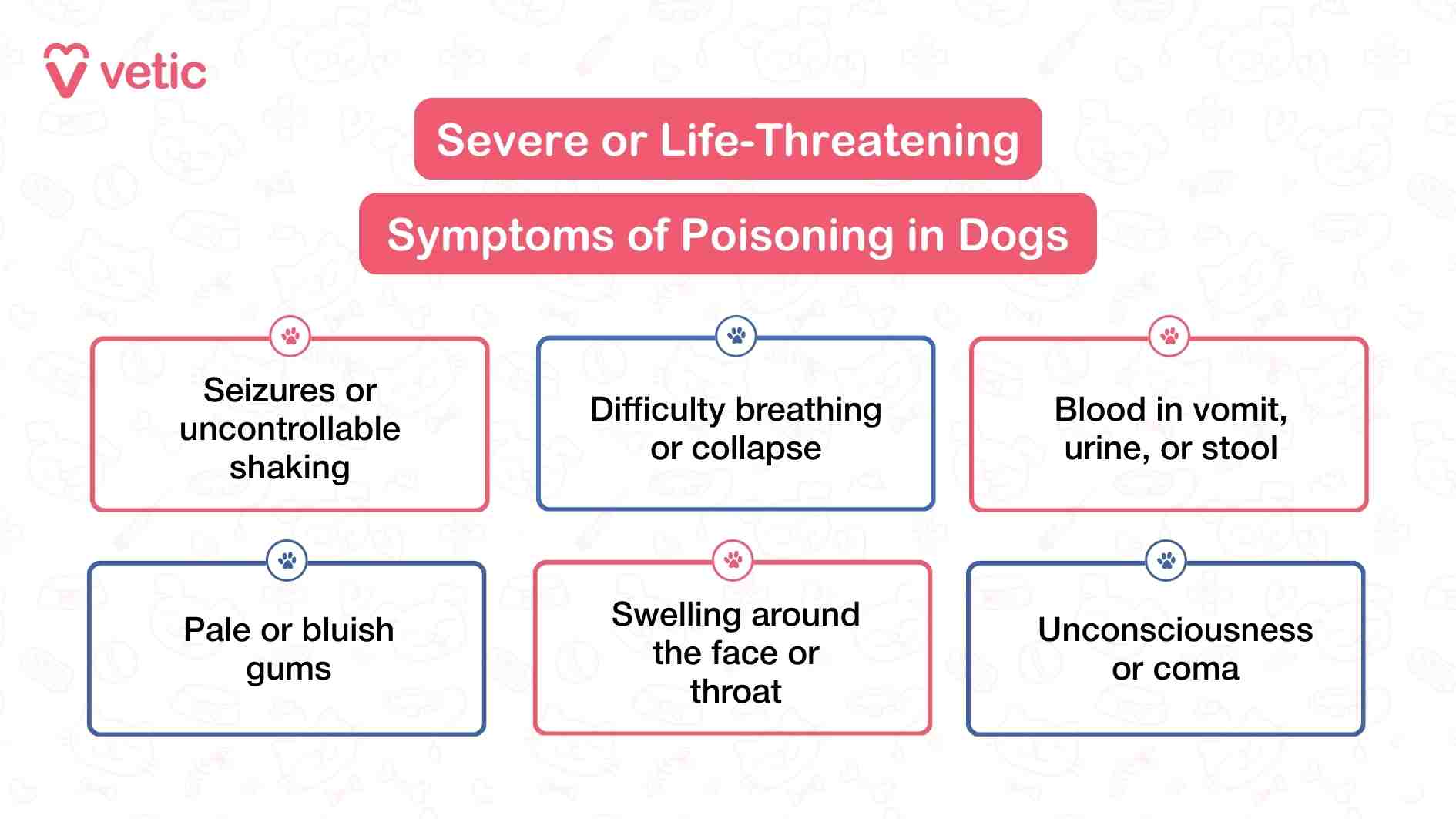
If the poisoning has progressed, your dog may show more serious signs such as:
- Seizures, twitching, or muscle tremors
- Difficulty breathing or collapse
- Bloody vomit, urine, or stool
- Abnormal heart rate or body temperature
- Swelling of the face or throat
- Sudden unconsciousness or coma
These are emergency situations. Take your dog to the nearest veterinary clinic immediately.
What Should I Do If My Dog Is Showing Signs of Poisoning?
Time is critical when it comes to poisoning. Acting quickly can make all the difference in your dog’s survival and recovery.
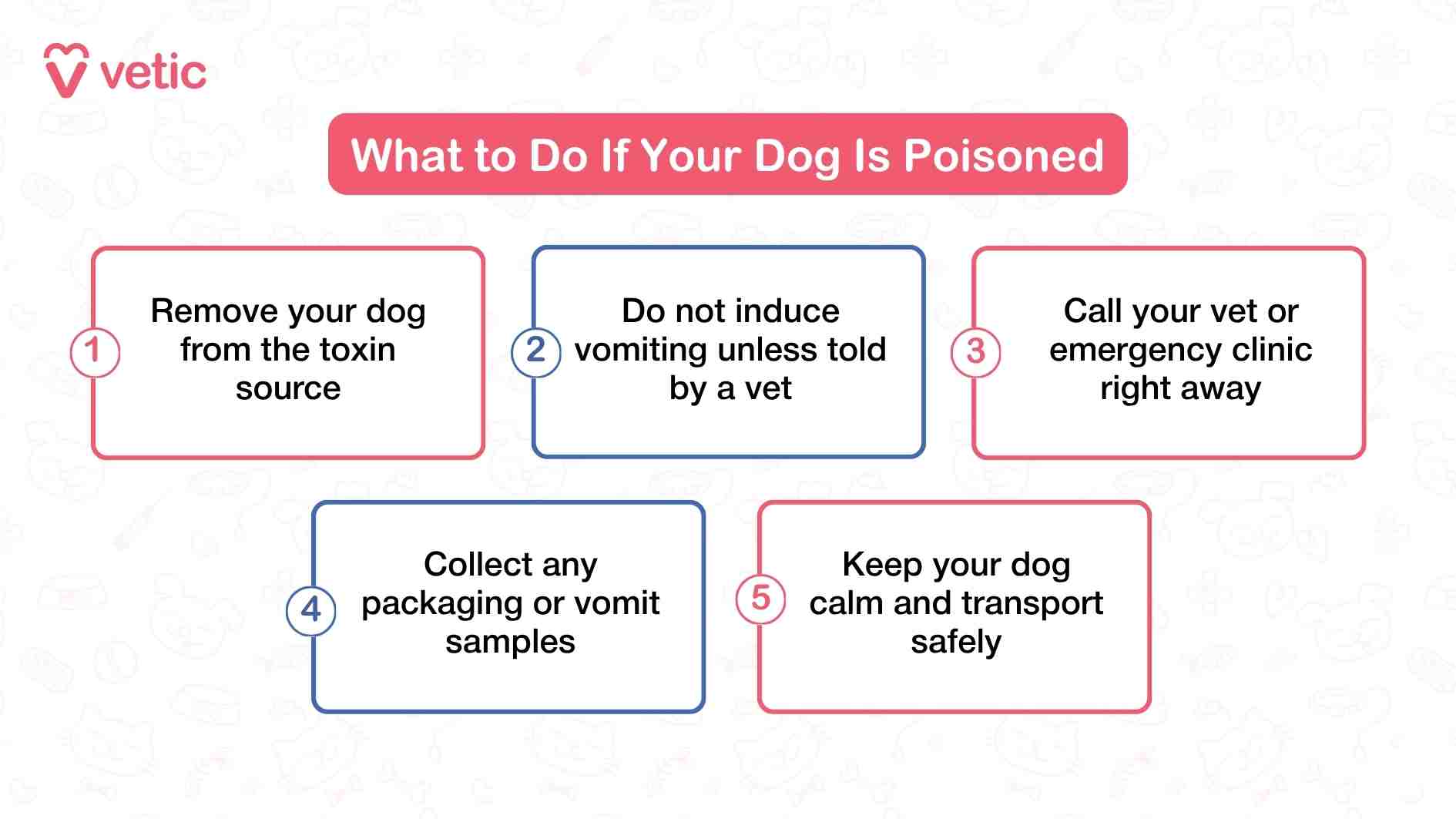
Step-by-Step Emergency Response for Dog Poisoning
Stay calm and remove your dog from the source.
Move your dog away from the suspected toxin or contaminated area.
Check what your dog may have eaten or touched.
Collect any packaging, vomit, or remaining substance to show your veterinarian.
Do not induce vomiting unless instructed.
Some poisons (like caustic cleaners or sharp objects) can cause more harm if vomited up.
Call your veterinarian or an emergency clinic immediately.
Describe your dog’s symptoms, weight, and what you think they were exposed to.
Transport your dog safely.
Keep your dog calm, wrapped in a towel or blanket. Avoid offering food or water unless told otherwise.
Follow veterinary instructions carefully.
Treatment for poisoning in dogs may include activated charcoal, IV fluids, anti-seizure medication, or antidotes, depending on the toxin involved.
How Can You Prevent Dog Poisoning and Toxicity?
Prevention is far easier (and cheaper) than emergency treatment. Make your home and surroundings poison-safe for your pet.
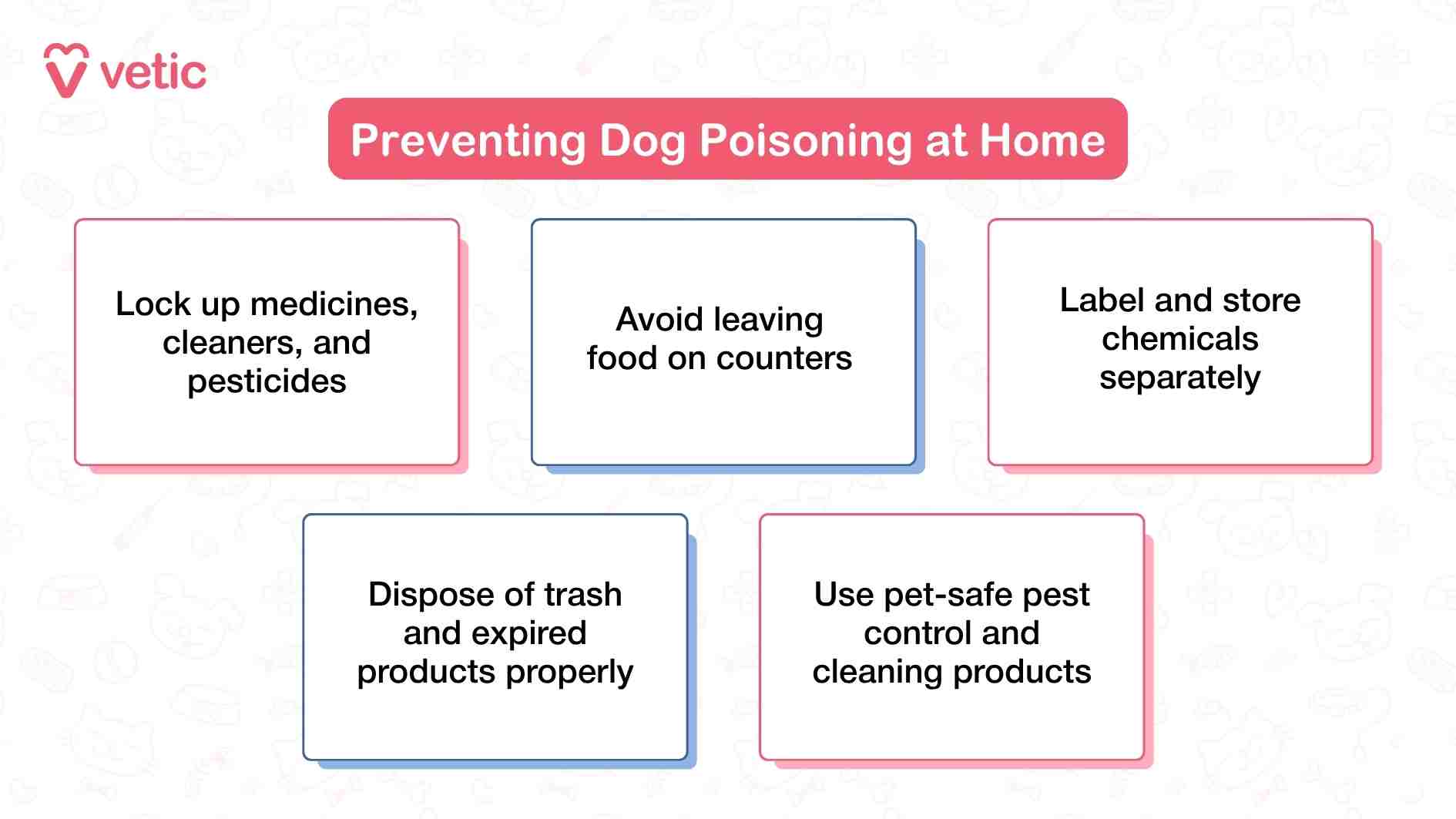
Safe Storage Tips for Dog Owners
- Keep all cleaning products, pesticides, and human medicines in locked cabinets.
- Avoid leaving food on countertops — especially chocolate, onions, and grapes.
- Use pet-safe floor cleaners and pest control sprays.
- Dispose of trash and leftover food promptly.
Outdoor Safety Tips to Prevent Dog Poisoning
- Identify and remove toxic plants from your garden.
- Do not let your dog drink from puddles or stagnant water.
- Keep your dog leashed during walks to avoid exposure to pesticides or dead animals.
- Rinse your dog’s paws after outdoor play to remove potential toxins.
Are Some Dog Breeds More Vulnerable to Poisoning?
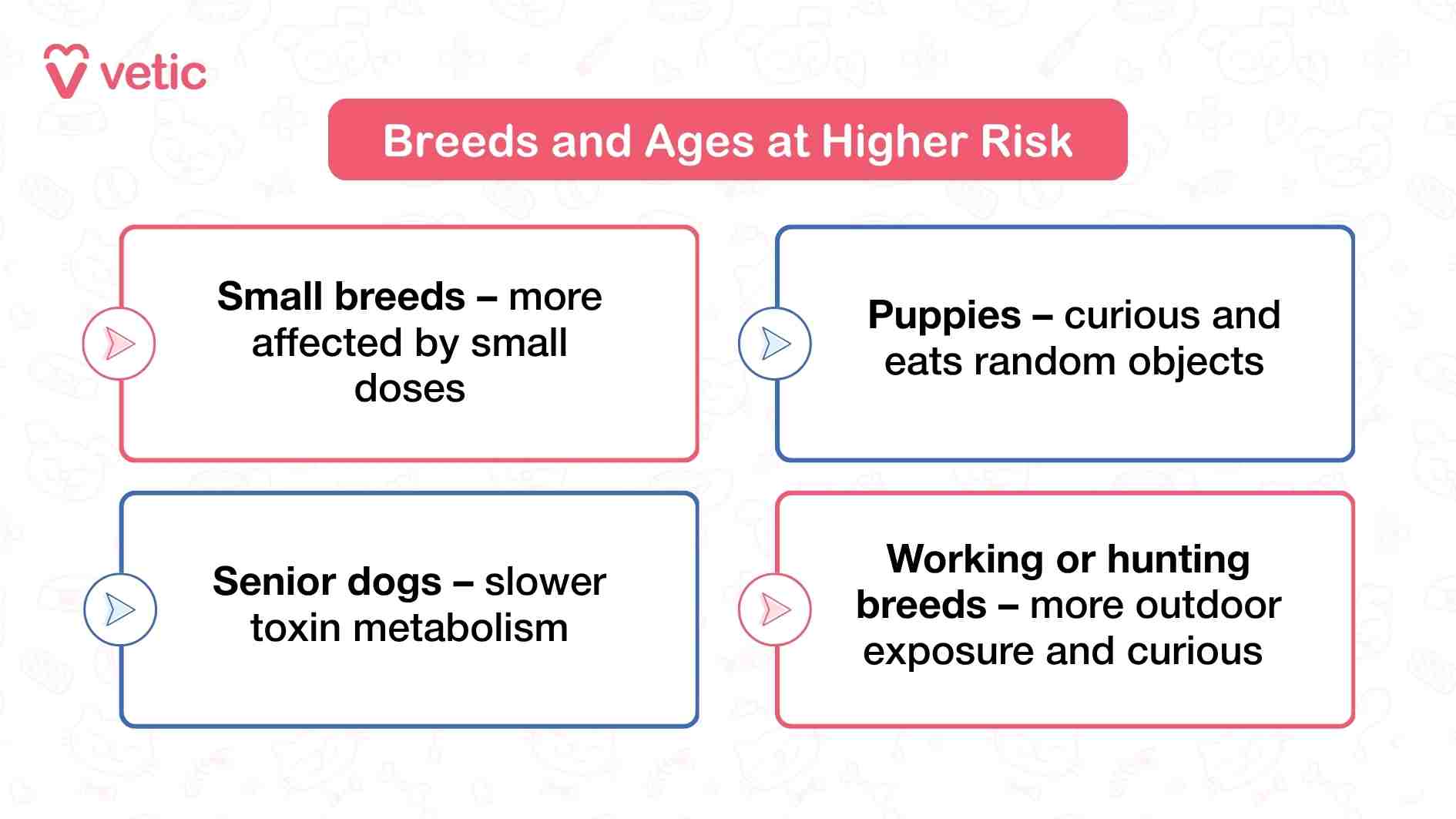
Yes, certain breeds and age groups are more sensitive to toxins:
- Small breeds (like Pugs, Chihuahuas, or Dachshunds) are at higher risk due to lower body weight.
- Working and hunting dogs are more likely to encounter environmental toxins outdoors.
- Senior dogs and those with liver or kidney issues may metabolize toxins more slowly, increasing the danger.
- Puppies are at risk simply due to curiosity and a weaker immune system.
Recognizing the signs of dog poisoning early, from vomiting and drooling to tremors and seizures, can save your pet’s life. If your dog has eaten poison or is showing symptoms, seek veterinary help immediately instead of trying home remedies.
With quick action and preventive care, most dogs recover fully from poisoning. Always keep your vet’s emergency contact handy — it could make all the difference.
FAQs About Dog Poisoning and Toxicity
What are the first signs of poisoning in dogs?
Early symptoms include vomiting, excessive drooling, loss of balance, pale gums, and refusal to eat.
My dog is foaming at the mouth — does that mean poisoning?
Not always, but it’s a red flag. Foaming may occur from nausea, seizures, or toxin exposure. Call your vet immediately.
If my dog eats poison, what should I do first?
Do not panic or induce vomiting. Move your dog away from the source and contact your veterinarian or a 24-hour pet clinic immediately.
How do vets treat dog poisoning?
Treatment may include activated charcoal, IV fluids, oxygen therapy, and antidotes depending on the poison type.
Can a dog survive after eating rat poison?
Yes, but only with immediate treatment. Rat poison affects blood clotting and can be fatal if delayed.
How long after eating something toxic will a dog show symptoms?
Some toxins act within minutes, others may take hours or days. Always monitor your dog closely after suspected exposure.
Are there home remedies for dog poisoning?
No safe home remedies exist. Certain poisons worsen if you try to induce vomiting or feed milk. Only a vet can provide appropriate treatment.
How can I prevent my dog from eating poison again?
Keep toxins securely stored, supervise your dog outdoors, and educate family members about common pet hazards.

